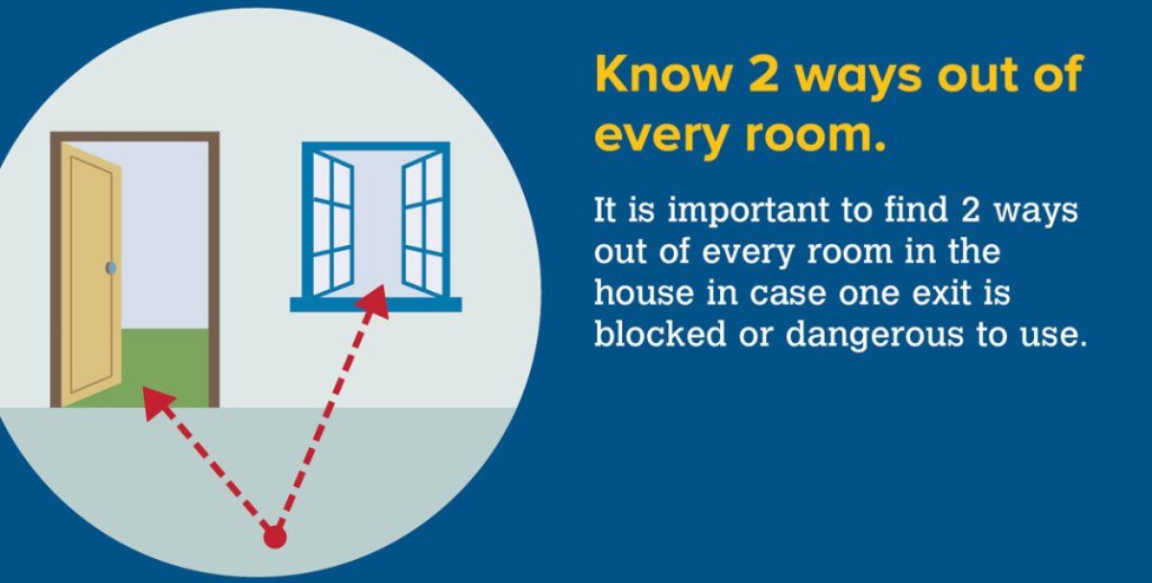It would help if you had a Smoke Alarm and a fire escape shelf Plan in case of a fire. Even if smoke detectors detect a fire, a predetermined escape route can save lives. A fire escape plan is a must in every building, whether a home or a business. The inherent nature of house fires is that they might occur when people are not expecting them. You are risking your life and the lives of your loved ones if you don't have a way to get out of this situation.
Checklist For An Escape Plan
- Use our printable grid or paper to sketch out your escape route, then have the whole family weigh in on how best to execute it (download and print your grid).
- Identify and document two escape routes from each room.
- Keep your doors and windows clear so they can swiftly open in an emergency.
- Remember to lock any inside doors you pass on your way out. In the event of a fire, this can help contain the blaze and limit property loss.
- Choose a public site, like the mailbox area, where you feel comfortable meeting.
- Leave and don't come back! If a building is on fire, leave immediately.
- Smoke alarms should be installed, tested once a month, and the batteries should be replaced every six months (for battery-operated alarms).
Don't Forget
- Getting close to an escape fire and breathing in the smoke can cause mental confusion. You can't see much in that haze, so go low and find an exit as soon as possible.
- Smoke won't bother you as you sleep and may even help you have a better night's rest.
- If your clothing catches fire, you should immediately STOP, DROP, COVER, and ROLL to extinguish the fire.
- A yearly inspection may be necessary for oil, gas, or wood-burning furnaces.
- Always install a safety switch and use fuses of the correct amperage.
- Everyone should take steps to ensure their homes are safe in the case of a fire.
Suggestions
- Doors that feel hot to the touch should never be opened. You are using the palm of your hand to feel the inside of a closed door to ensure there is no fire behind it. Use a different exit if the temperature starts to rise.
- Extra care must be taken when installing security bars. Fires are dangerous places to be trapped by security bars. Security bars on windows and doors should have quick-release mechanisms installed so they may be opened in an emergency.
- If you reside in an apartment complex, you should familiarize yourself with and rehearse the building's emergency procedures.
- If the fire alarm sounds, get out of here!
Conclusion
If you have a working smoke alarm and an escape plan, you will have a far better chance of safely escaping a fire in the building. Possessing a smoke alarm installed can alert you to a fire, but having a well-planned escape route can help you and your family get away from the house faster. Every building, whether residential or commercial, needs an escape strategy ready in an emergency. Home fires are unpredictable and can catch people off guard.


